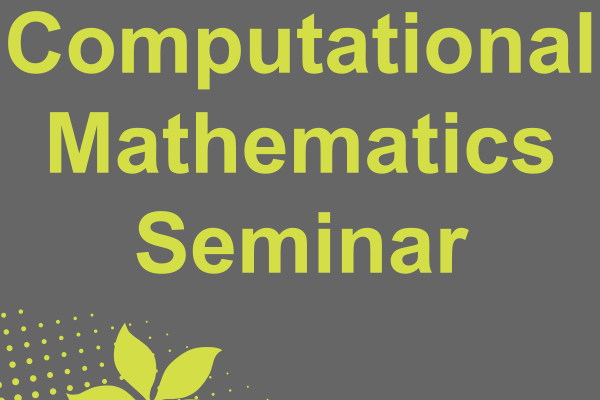
Title: Computational Graph Completion
Speaker: Houman Owhadi (California Institute of Technology)
Speaker's URL: http://users.cms.caltech.edu/~owhadi/
Abstract: We introduce a framework for generating, organizing, and reasoning with computational knowledge. It is motivated by the observation that most problems in Computational Sciences and Engineering (CSE) can be described as that of completing (from data) a computational graph representing dependencies between functions and variables. Functions and variables may be known, unknown, or random. Data comes in the form of observations of distinct values of a finite number of subsets of the variables of the graph (satisfying its functional dependencies). The underlying problem combines a regression problem (approximating unknown functions) with a matrix completion problem (recovering unobserved variables in the data). Replacing unknown functions by Gaussian Processes (GPs) and conditioning on observed data provides a simple but efficient approach to completing such graphs. Since the proposed framework is highly expressive, it has a vast potential application scope. Since the completion process can be automatized, as one solves $\sqrt{\sqrt{2}+\sqrt{3}}$ on a pocket calculator without thinking about it, one could, with the proposed framework, solve a complex CSE problem by drawing a diagram. Compared to traditional regression/kriging, the proposed framework can be used to recover unknown functions with much scarcer data by exploiting interdependencies between multiple functions and variables. Numerous examples illustrate the scope and efficacy of the proposed framework and show how it can be used as a pathway to identifying simple solutions to classical CSE problems. These examples include the seamless recovery of known methods (for solving/learning PDEs, surrogate/multiscale modeling, mode decomposition, deep learning) and the discovery of new ones (digital twin modeling, dimension reduction).
URL associated with seminar: https://people.math.osu.edu/xing.205/seminar.html
ZOOM: https://osu.zoom.us/j/96798699124?pwd=NE16ajlsaThKMW5CN2VEaEpjT3gyUT09
